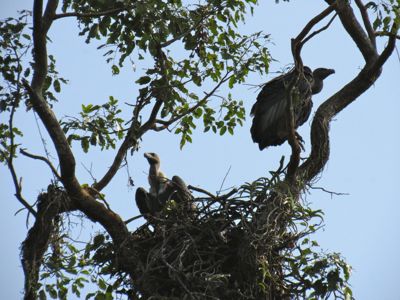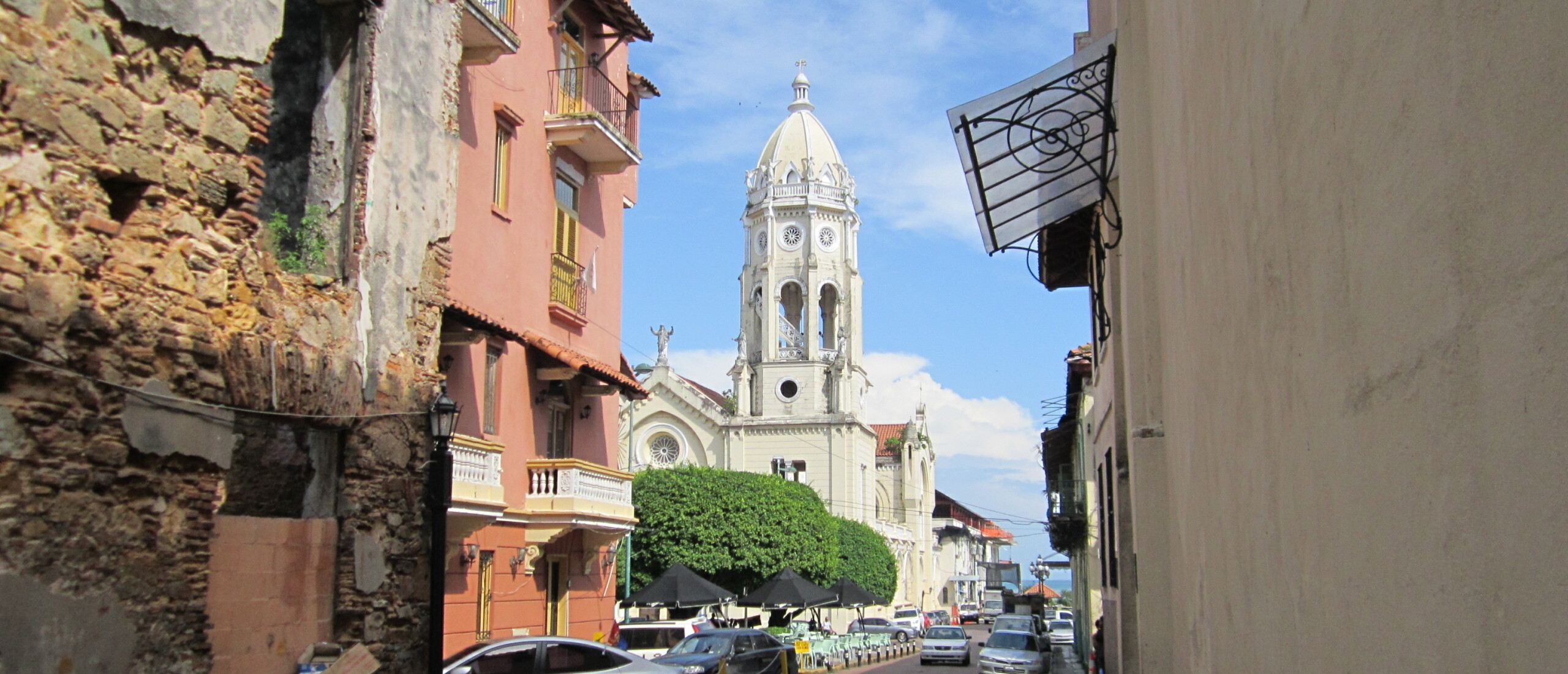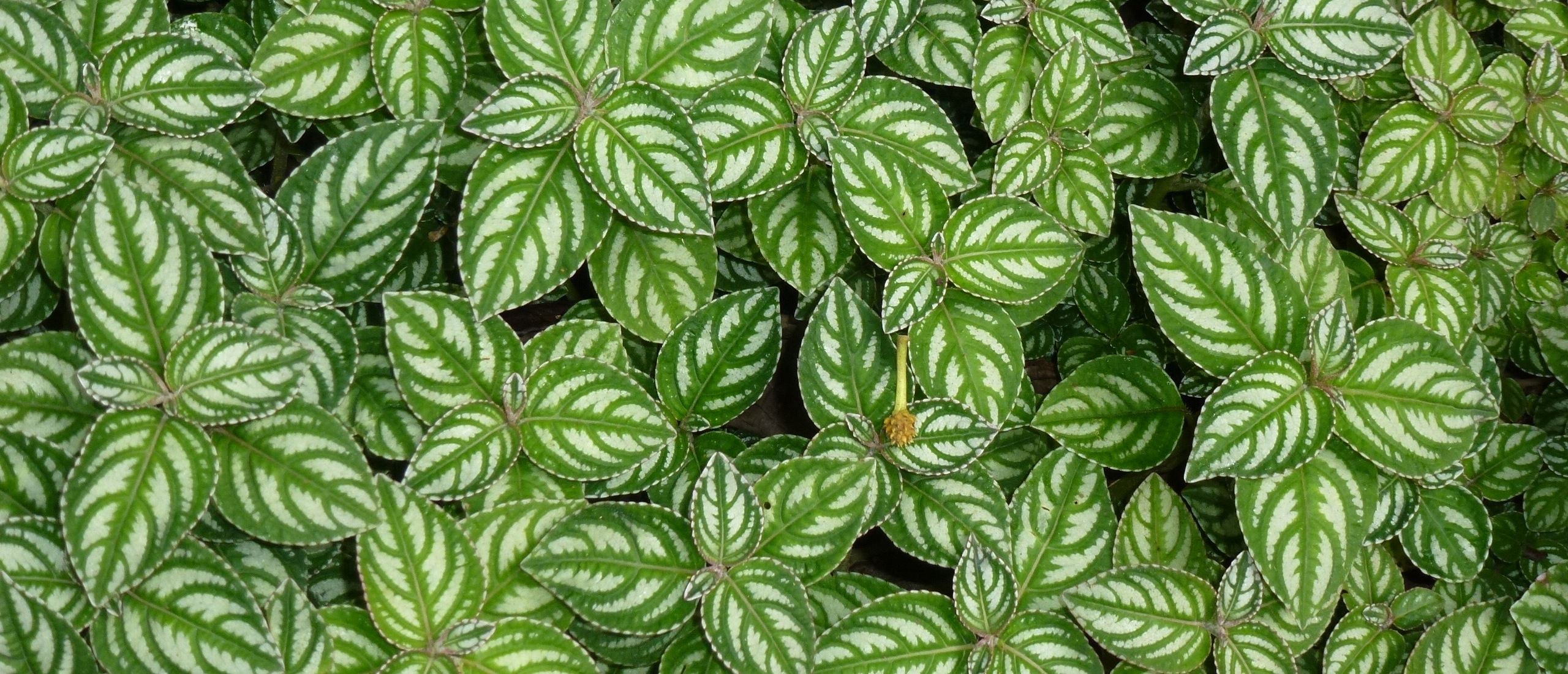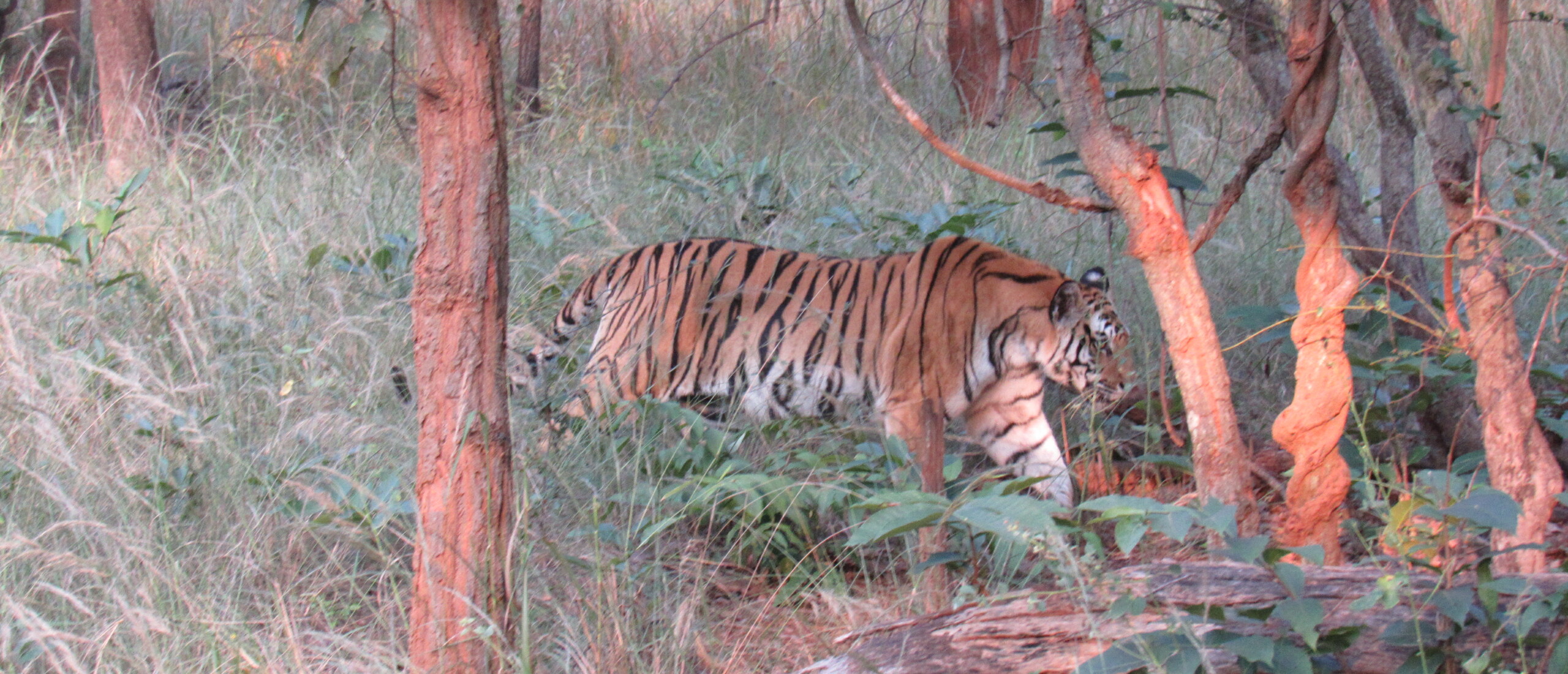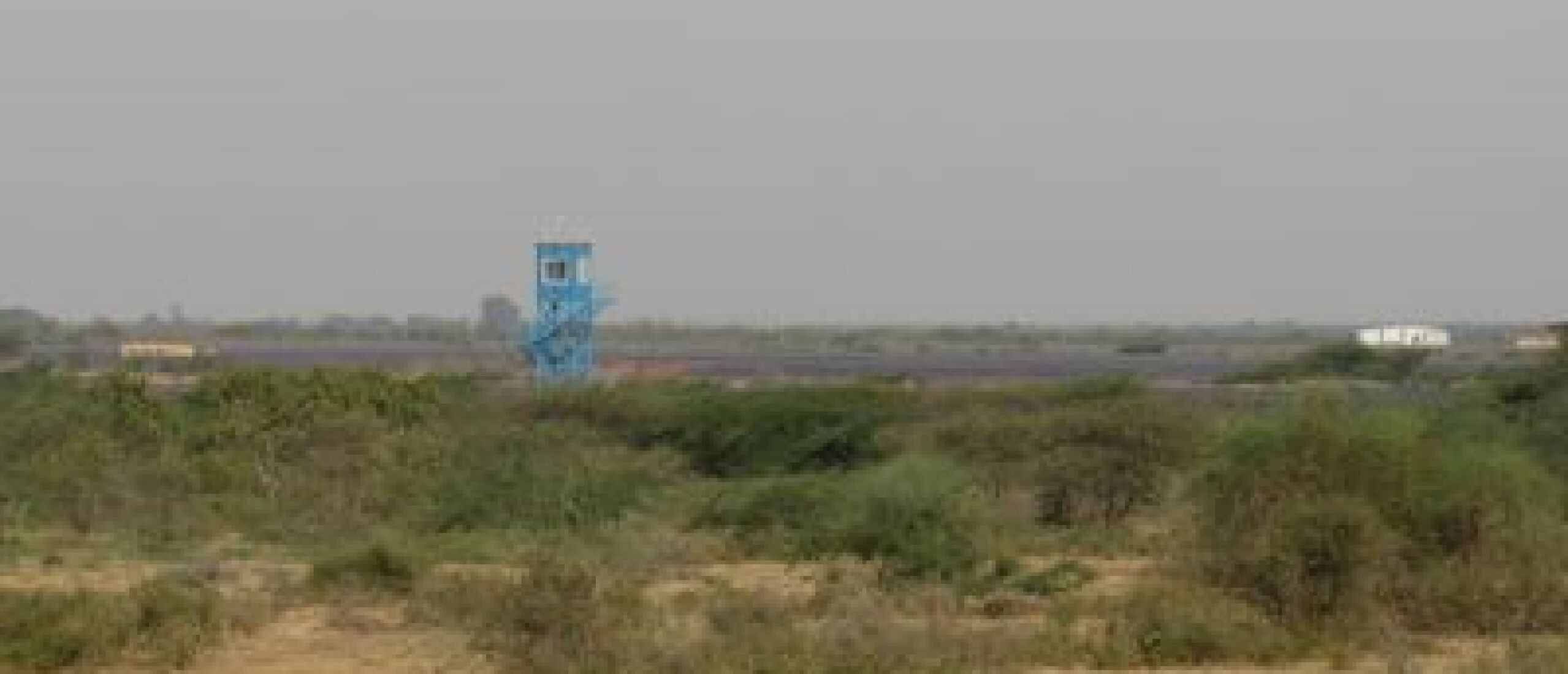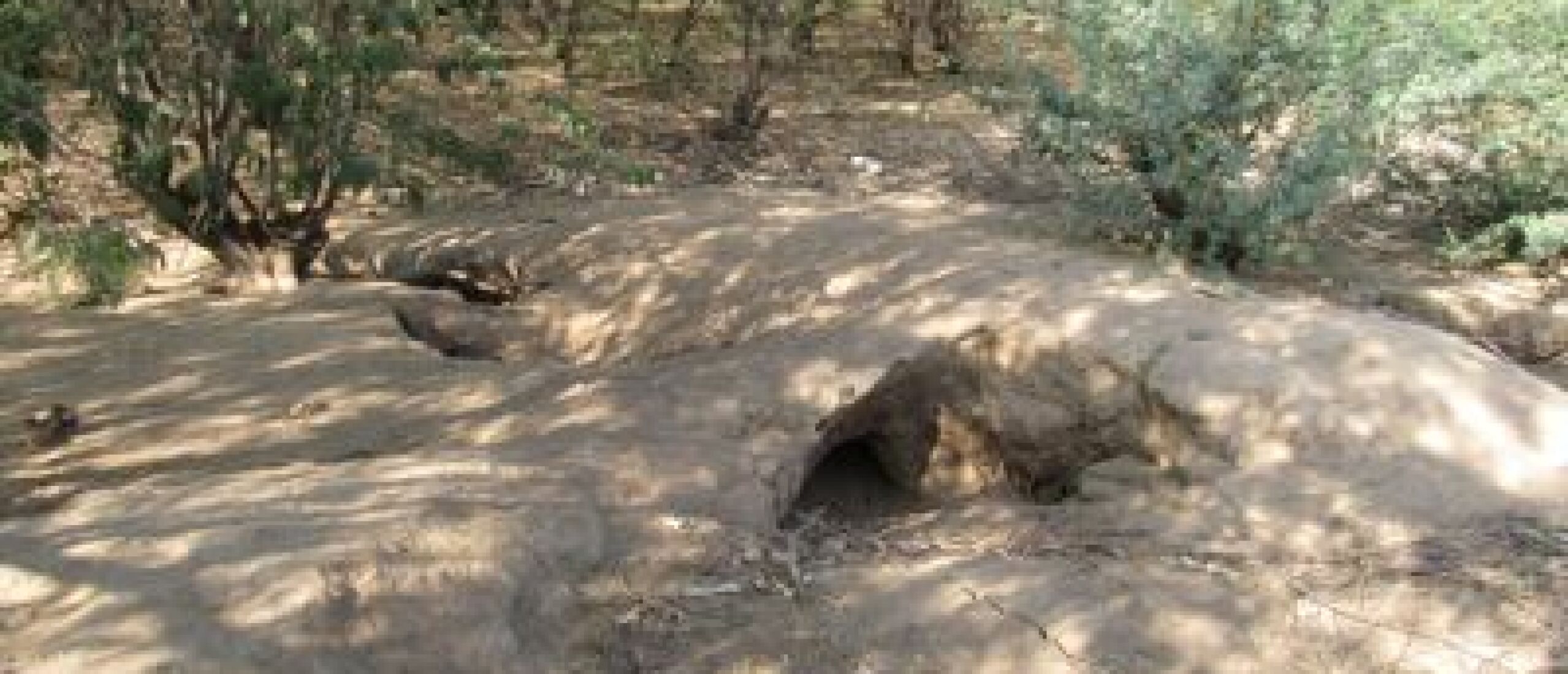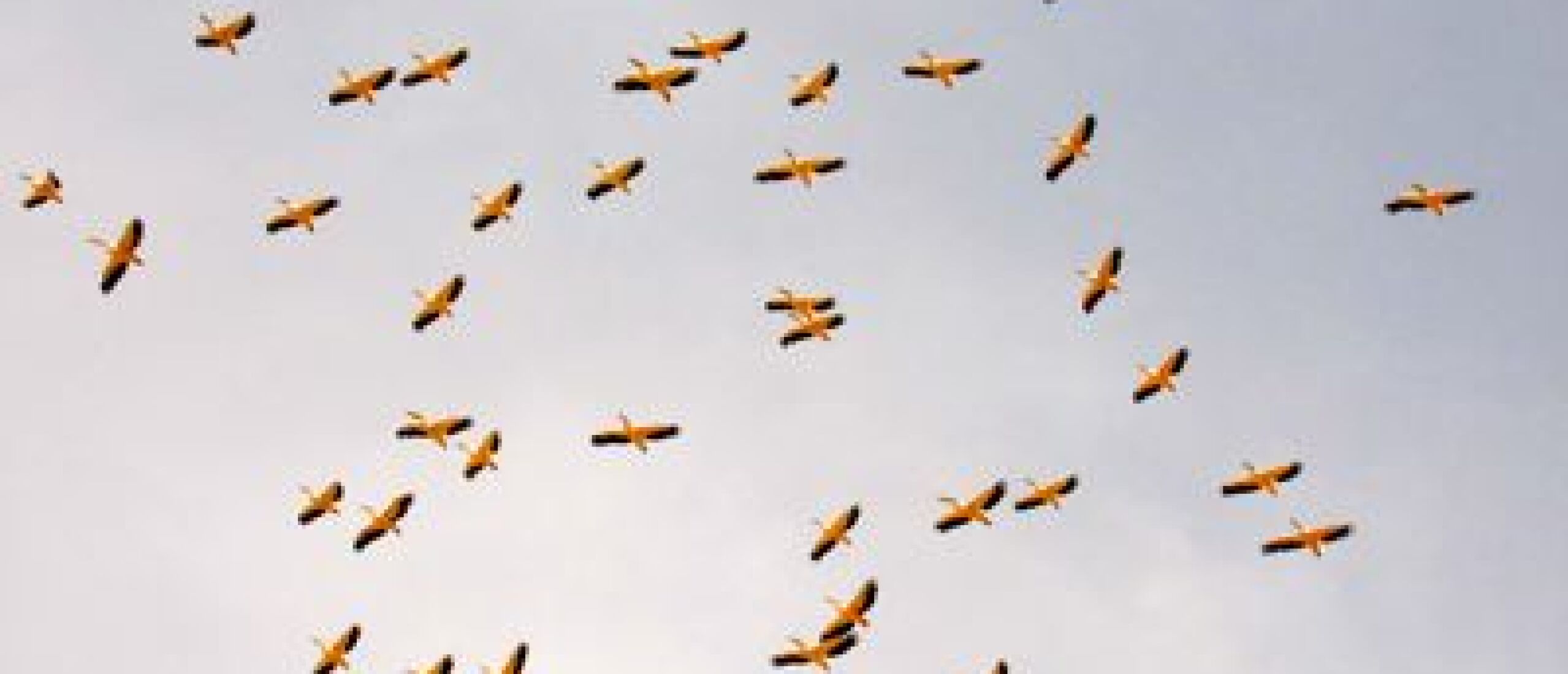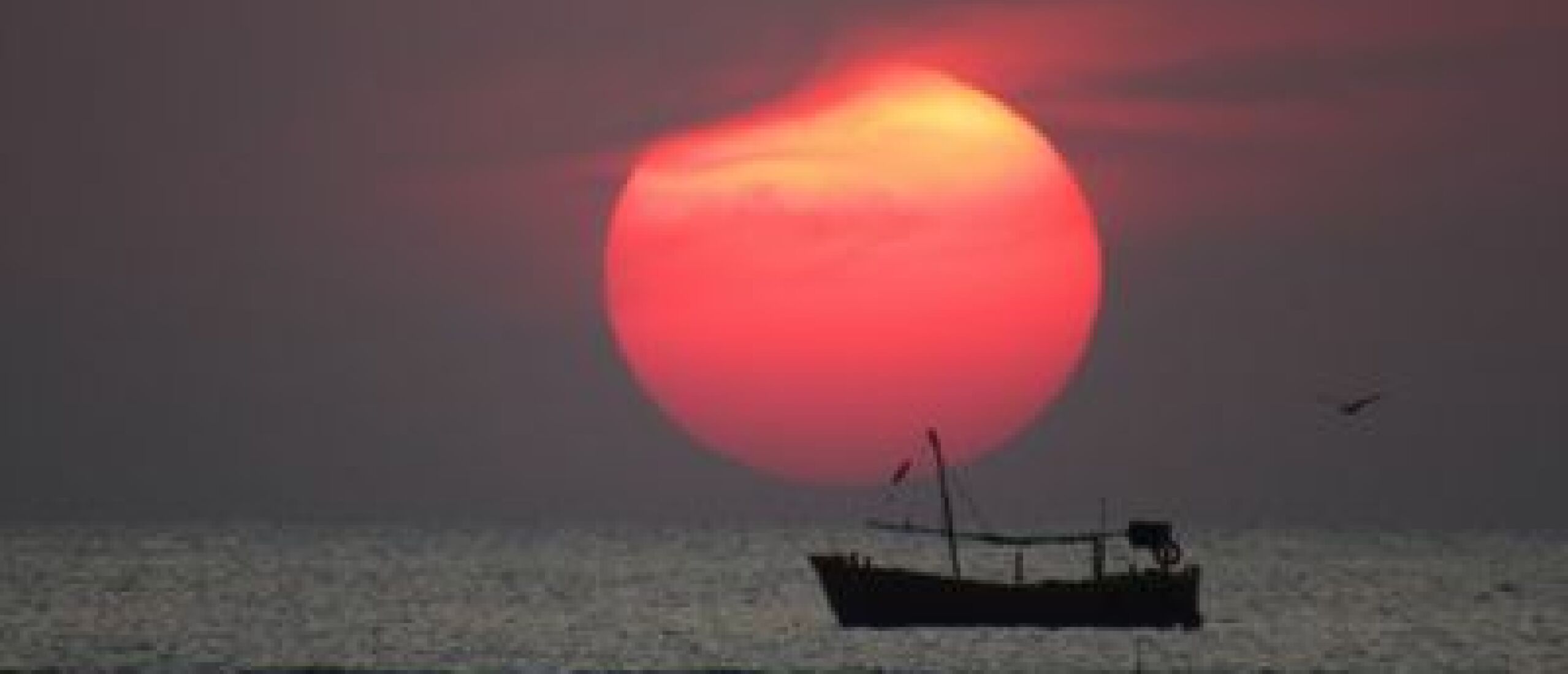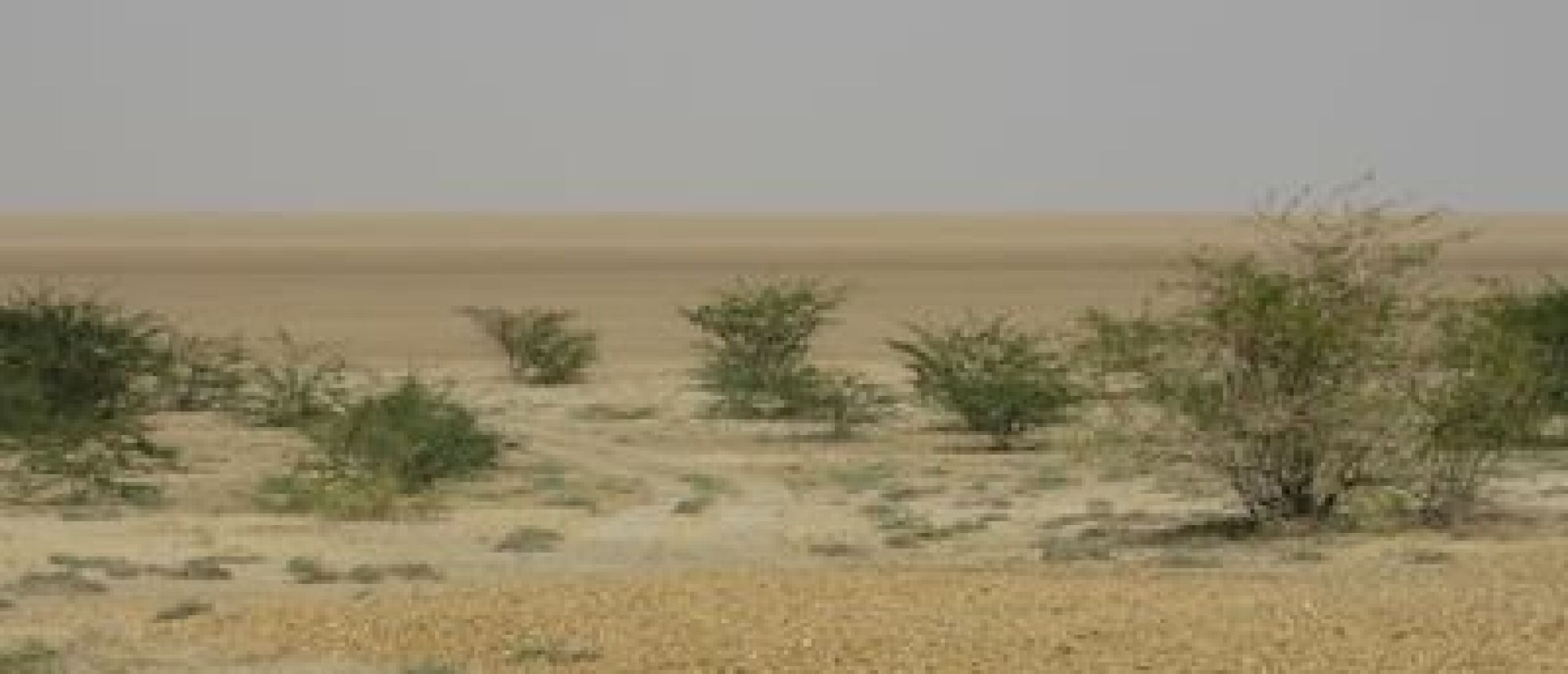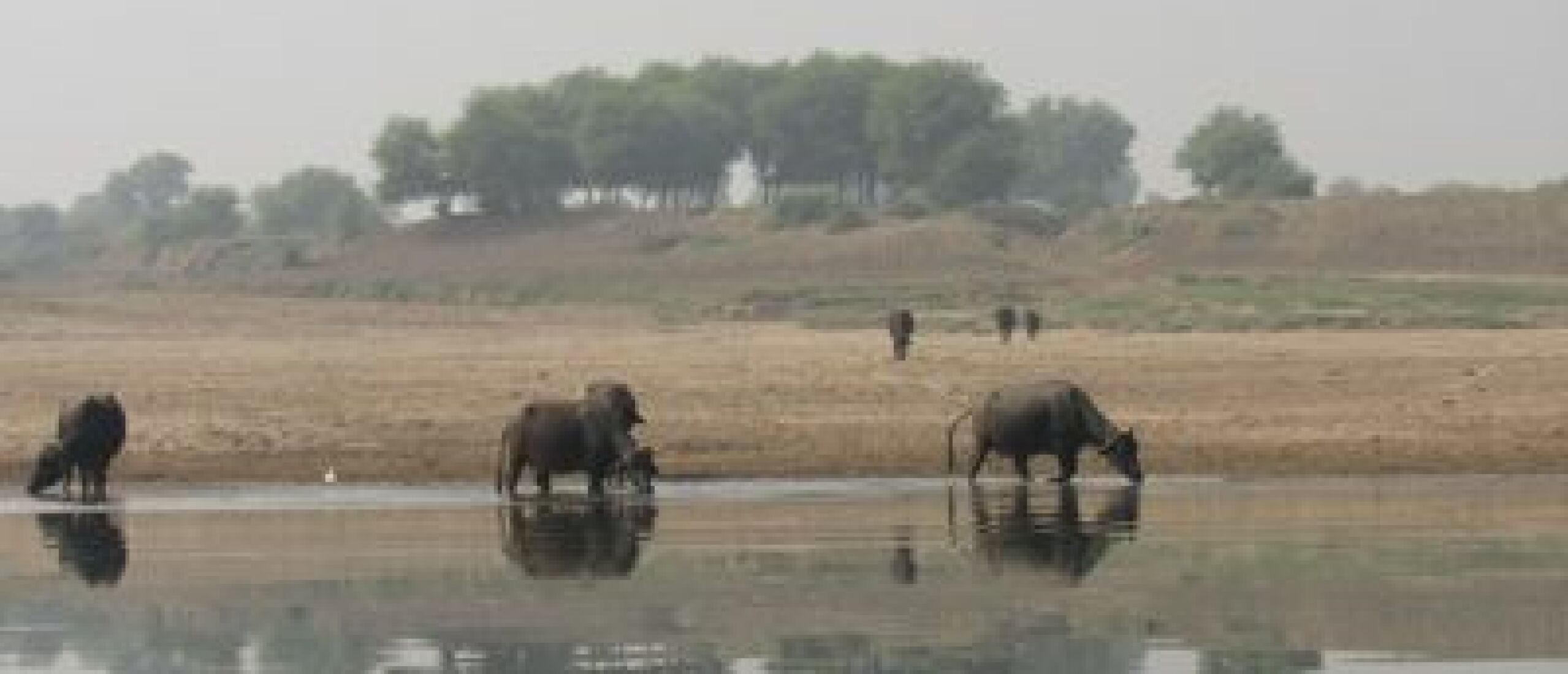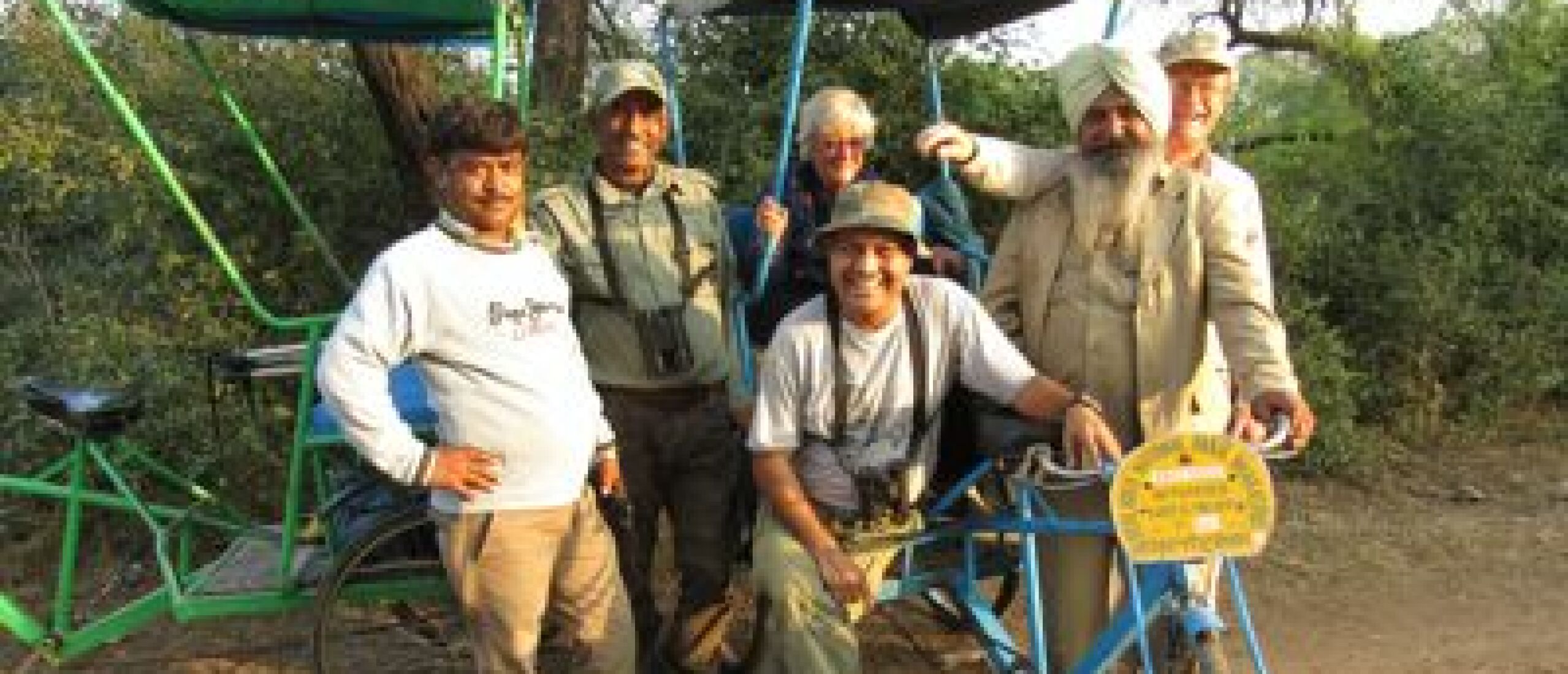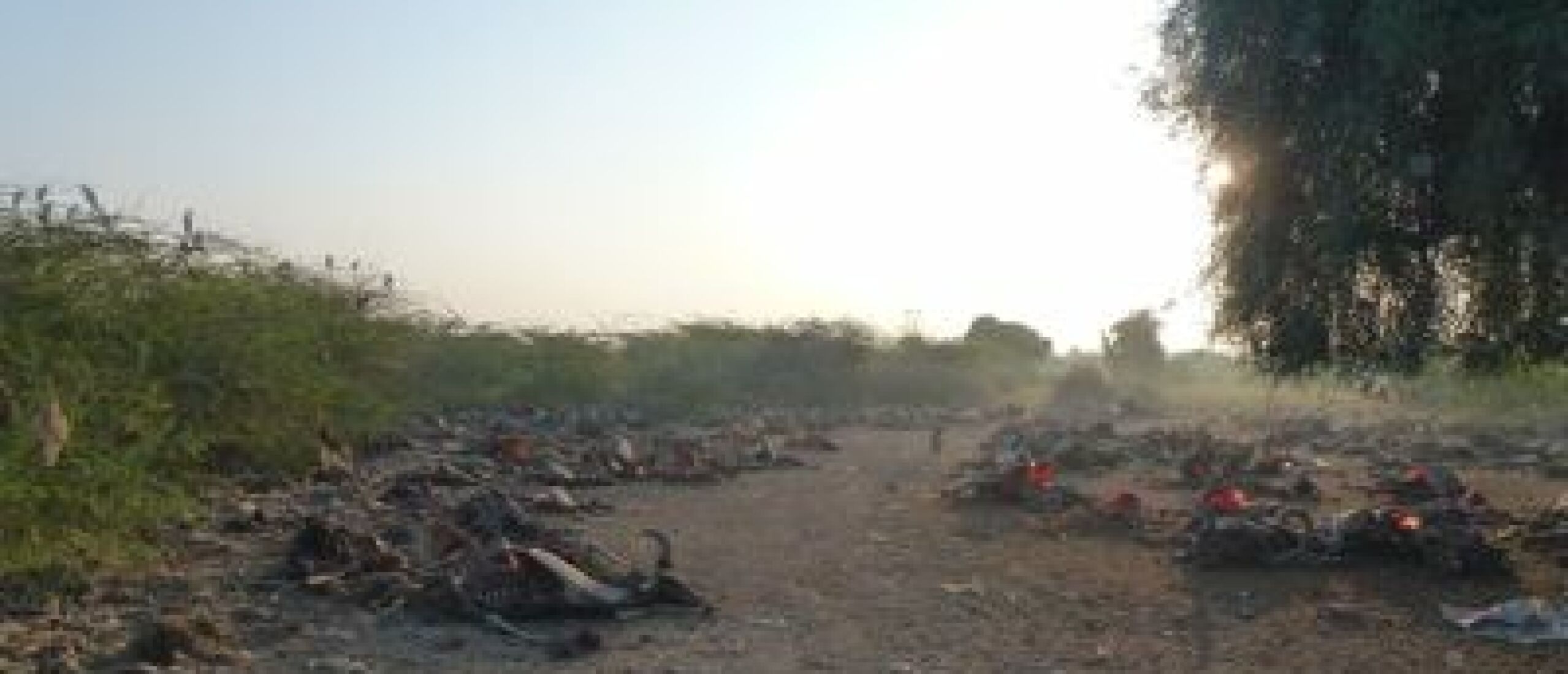
A macabre but somehow cheering sight Following the disappointing story of the hyaena search, our time in Gujarat drew to a close. On our final morning, we were taken to what can only be described as a vision of Hell, a carcass dump where hundreds of dead cows, devoid of their skins, are dumped to rot in the Gujarat sunshine. Well, rot if they get to that stage; the remains provide a ghoulish feast for scavengers, and it was for that reason that this horrifying sight/site had been included in our itinerary. Ironically, during our visit the only vultures present were a few Egyptian, plus numerous Black-headed Ibises, Cattle Egrets and Black Kites. The larger vultures apparently fly in from their roosting sites later in the day.
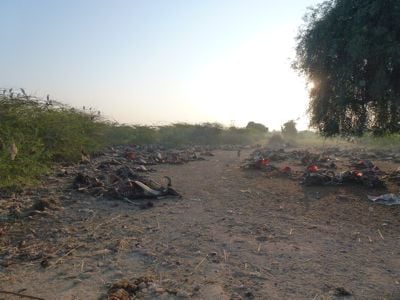 Photography was not officially permitted at the horrifying carcass dump
Photography was not officially permitted at the horrifying carcass dump
Many people are unaware of the horrific plight of vultures in India. In the 1980s, there were an estimated 80 million White-rumped Vultures in India; today, only a few thousand remain. This has been the fastest recorded decline of any species in history. Other vulture species, especially the Indian Griffon and the Long-billed, have been only slightly less severely affected.
 A flock of vultures photographed by my grandfather F W Champion in the 1920s
A flock of vultures photographed by my grandfather F W Champion in the 1920s
The cause of these catastrophic declines has been traced to the veterinary drug Diclofenac, which was widely used to treat inflammation in cattle in the early 1990s. When a cow dies and a vulture consumes its meat, the vulture dies of acute kidney failure. Vultures performed a vital task in cleaning up carcasses in India, and now that they have virtually gone, there has been a huge increase in scavenging dogs, and rabies has spread, until currently 20,000 to 30,000 people die of the disease each year, many of them children. Other diseases have also increased,including anthrax and bubonic plague. Culturally too the disappearance of the vultures has affected the Parsi/Parsee community, who used traditionally to leave their dead on so-called Towers of Silence, where the vultures would consume the corpses, thereby liberating the souls of the dead. This has now had to stop as there are no vultures to perform the task.
Diclofenac is now officially banned in India, Nepal and Pakistan, but enforcement of the ban is hard, and the populations are now so low that recovery is by no means assured. Vultures breed slowly, and the birds are vulnerable to other forms of poisoning too. Farmers may lay out poisoned carcasses in order to kill jackals, wolves, hyaenas, wild boar or even leopards, and vultures are the unintended by-catch. In Africa, they have become victims of ivory poachers, who kill elephants with poison in order to obtain their tusks, and vultures then consume the carcasses, later dying an agonising death. In some cases, the vultures have been deliberately poisoned by the poachers, as their circling in the skies is likely to alert the authorities to the presence of poisoned elephant carcasses.
 The White-rumped Vulture's white rump is clearly visible in this shot by F W Champion in the 1920s
The White-rumped Vulture's white rump is clearly visible in this shot by F W Champion in the 1920s
My grandfather, F W Champion, published an article about Indian vultures in the magazine India, in May 1931, an extract of which follows, showing firstly the admiration he had for the vultures' power of flight, and secondly the lengths he was willing to go to in order to test their eyesight: The powers of soaring possessed by vultures are one of the marvels of creation. One has only to watch one of these great birds cruising along through the air for minutes at a stretch, without any visible movement of its wings, to form some idea of the marvellous powers of flight possessed by these heavy birds, which can and do drop like plummets when arriving at feasts of carrion. The modern engineless gliding machines are man’s feeble imitation of the vulture and other soaring birds, but, wonderful though it seems to us, what a poor thing is man’s glider compared with the majestic and effortless soaring of an eagle or vulture!
 Vultures may seem ungainly on the ground, by they are masters of the air
Vultures may seem ungainly on the ground, by they are masters of the air
If the flight of vultures fills us with wonder, what can be said of their powers of sight, which are quite beyond human comprehension! A wretched cow or other creature staggers and falls in some open place, never to rise again and perhaps no single vulture will be anywhere visible to the eyes of man. But, after a few minutes, first one and then another will appear from the blue sky, until perhaps a hundred or more have collected, all eagerly dropping down to the feast before it is too late. For many years there were great arguments among naturalists as to how vultures found their food, some asserting that it was by their sense of smell, others by their wonderful eyesight, and yet others would have endowed them with some sixth sense totally unknown to mankind. It is now, however, well known that it is purely a matter of eyesight, although it still seems marvellous that a bird can see a dead body from a height of a mile or more. Bodies lying in thick jungle are very rarely found by vultures, and in the open they are undoubtedly often helped by crows, which, being tree-dwellers, are usually the first to arrive at the scene of death. One vulture sees the excitement among the crows and swoops down to find out what the crows are after. Another vulture sees the first one swoop and follows and so on until, in the words of Longfellow, “The air is thick with pinions”.
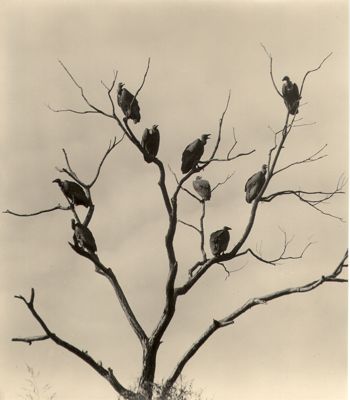 F W Champion seemed to have an ability to ask his subjects to pose artistically
F W Champion seemed to have an ability to ask his subjects to pose artistically
Anyone who does not believe that vultures work purely by eyesight can easily make a little test for himself. Let him choose some open spot, preferably with vultures visible in the sky above him. Then let him stagger about for a bit and finally collapse, lying absolutely still in view of some soaring vulture. In a very short time the vulture will have come down to investigate and will be followed by others, and if the experimenter lies still enough, he can draw a ring of these birds of death round him, each one waiting for another to make the first move as the sign for the feast to begin. It is a most uncanny sensation to lie with a crowd of birds sitting round awaiting to eat one’s supposedly dead body and one can almost see their disgust when one suddenly gets up, and, in imagination at least, flings the old question at them “Have you ever been had?”
 A vulture looks straight into the camera from its tree in Pench National Park
A vulture looks straight into the camera from its tree in Pench National Park
Luckily, a few people are campaigning for a recovery of the vulture populations, among them Aditya Roy, who works with local people to help save those vultures that still survive. His project was filmed last year by my friend David Stanton, and I had the honour of being asked to narrate the film, a true collaborative venture! Please enjoy this gruesome, yet somehow wholesome, film to understand just what is being done to save Gujarat's highly endangered vultures.


